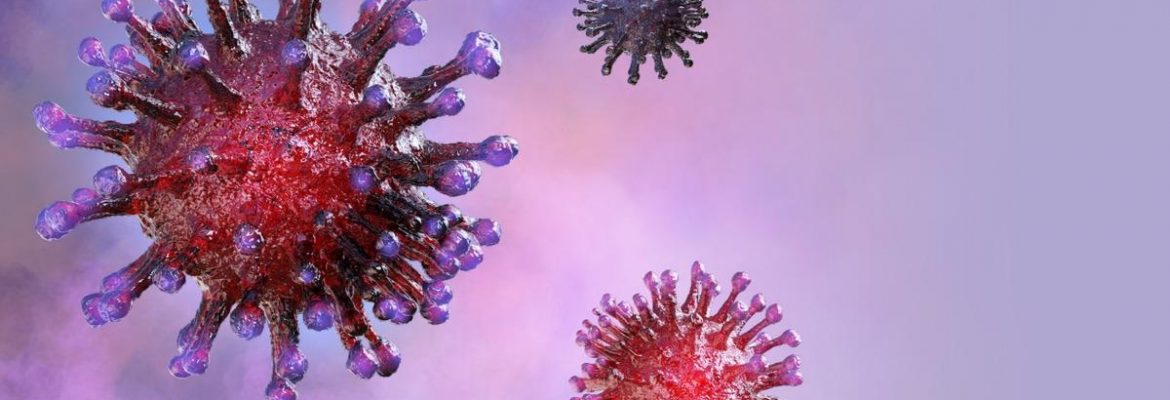Antiviral functions of interferon regulatory factors during human coronavirus infection
In a recent study posted to the bioRxiv* preprint server, researchers assessed the roles of the interferon (IFN) regulatory factors (IRFs): IRF1, IRF3, and IRF7 in infections by human coronaviruses (HCoVs).

Background
The enveloped single-stranded positive-sense ribonucleic acid (RNA) viruses, HCoVs, typically infect respiratory tracts in humans. HCoVs consist of four genera: α-CoV, β-CoV, γ-CoV, and δ-CoV. Moreover, β-CoVs such as severe acute respiratory syndrome CoV-2 (SARS-CoV-2), SARS-CoV, and Middle East respiratory syndrome CoV (MERS-CoV) are linked to mortality risk in humans.
IRFs are important components of host antiviral non-specific immune responses that control the transcription of IFN-stimulated genes (ISGs) and IFNs. Although numerous HCoVs are susceptible to IFNs, the antiviral functions of IRFs remain unclear. To combat the ongoing and future HCoV pandemics, an in-depth understanding of IRF-mediated antiviral responses in HCoV infections is critical.
About the study
In the present study, the scientists investigated the antiviral roles of IRF7, IRF3, and IRF1 during HCoV (SARS-CoV-2, HCoV-OC43, and HCoV-229E) infections. The researchers executed gain- and loss-of-function evaluations on IRF7, IRF3, and IRF1 using RNA interference (RNAi) knockdown. This was to evaluate these IRFs' antiviral activities during HCoV infection. The team tested whether HCoVs stimulate antiviral non-specific immune responses in the infected cells.
HCoV-OC43, HCoV-229E, human lung cancer cell line H1299, human lung fibroblast cell line Medical Research Council cell strain 5 (MRC5), mouse fibroblast cell line L929, and human lung cancer cell line Calu-3 used in this study were procured from the American Type Culture Collection. Vesicular stomatitis virus (VSV) was titrated and amplified by plaque assay employing L929 cells. Recombinant human IFN-γ, IFN-λ 1, and IFN-α from Becton, Dickinson (BD) Pharmingen, research and diagnostic (R&D) Systems, and Bio-Rad, respectively, were used in this research.
Antibodies employed in the study included nucleocapsid (N) proteins of HCoV-OC43, HCoV-229E, SARS-CoV-2; and the active form of IRF3, i.e., phosphorylated IRF3 (phospho-IRF3); IRF7; IRF1; and IRF3. Negative control IRF1 small interfering RNA (siRNA), IRF7 siRNAs, and IRF3 siRNAs were used in the study. Further, the IRF7-ORF vector subcloned to pcDNA3 plasmid, IRF1-pINCY plasmid, and pcDNA3-IRF3 was employed in this investigation. Cell lysates western blot analysis was estimated using the aforesaid antibodies. The IRFs knockdown experiments were confirmed using quantitative reverse transcription-polymerase chain reaction (RT-qPCR) analyses.
Findings
The results indicated that the phosphorylation of signal transducer and activator of transcription 1 (STAT1) was seen in MRC5 cells exposed to IFN-γ and IFN-α, but not IFN-λ. This indicates that MRC5 cells were susceptible to IFN-1 and 2, yet not IFN-3. In addition, both type 1 and 2 IFN delayed HCoV-229E infection in MRC5 cells. However, IFN1 and IFN2 did not protect from HCoV-OC43 infection.
The HCoV-229E infection did not trigger IFN-inducible gene guanylate binding protein 2 (GBP2) four days after infection. Nonetheless, it led to a drastic elevation of other IFN-inducible genes: IFN-induced protein 44 (IFI44), IFN-induced protein with tetratricopeptide repeats 2 (IFIT2), a retinoic acid-inducible gene I (RIG-I), STAT2, and microtubule-associated protein 2 (MAP2) at four days following infection. On the contrary, HCoV-OC43 infection stimulated all the IFN-inducible genes two days following infection. These data indicated that HCoV infection substantially induced antiviral transcriptional responses in the host.
Following three to four days of HCoV-229E infection, IRF7, IRF1, and phospho-IRF3 elevated. The IRF7, IRF3, and IRF1 levels elevated from two days of HCoV-OC43 infection. Similarly, the IRF7, IRF1, and phospho-IRF3 levels hiked after two days of SARS-CoV-2 infection. These findings suggested that IRF7, IRF1, and IRF3 were stimulated following HCoV infections.
Importantly, IRFs overexpression and RNAi knockdown revealed that IRF3 and IRF1 had antiviral properties against HCoV-OC43. Nevertheless, IRF7 and IRF3 only restricted the HCoV-229E infection. These data suggest that although HCoVs infection down-modulated IRF3 expression, IRF3-facilitated antiviral response was still present.
Conclusions
The study findings demonstrated that the IFN type 1 or 2 treatment shielded the MRC5 cells from HCoV-229E infection, yet not HCoV-OC43. The HCoV-OC43 or HCoV-229E infections significantly boosted the ISGs, implying that antiviral transcription was not repressed in the infected cells. Cells infected by SARS-CoV2, HCoV-OC43, and HCoV-229E demonstrated activation of antiviral IRF7, IRF3, and IRF1. The loss-of-function investigations depicted that IRF7, IRF3, and IRF1 had antiviral activities against HCoV infections. In the gain-of-function experiments, IRF3 was effective against HCoV-OC43 and HCoV-229E infections relative to IRF7 and IRF1.
On the whole, the present work demonstrated that since IRF3 had antiviral capabilities against HCoV-OC43 and HCoV-229E, it could be a potential therapeutic target for curbing HCoV infections.
*Important notice
bioRxiv publishes preliminary scientific reports that are not peer-reviewed and, therefore, should not be regarded as conclusive, guide clinical practice/health-related behavior, or treated as established information.
- Xu, D. et al. (2022) "Antiviral roles of interferon regulatory factor (IRF)-1, 3 and 7 against human coronavirus infection". bioRxiv. doi: 10.1101/2022.03.24.485591. https://www.biorxiv.org/content/10.1101/2022.03.24.485591v1
Posted in: Medical Science News | Medical Research News | Disease/Infection News
Tags: Antibodies, Assay, Cancer, Cell, Cell Line, Coronavirus, Coronavirus Disease COVID-19, Diagnostic, Fibroblast, Gene, Genes, Interferon, Lung Cancer, Medical Research, MERS-CoV, Mortality, Phosphorylation, Plasmid, Polymerase, Polymerase Chain Reaction, Protein, Research, Respiratory, Retinoic Acid, Ribonucleic Acid, RNA, RNA Interference, RNAi, SARS, SARS-CoV-2, Severe Acute Respiratory, Severe Acute Respiratory Syndrome, siRNA, Stomatitis, Syndrome, Transcription, Virus, Western Blot

Written by
Shanet Susan Alex
Shanet Susan Alex, a medical writer, based in Kerala, India, is a Doctor of Pharmacy graduate from Kerala University of Health Sciences. Her academic background is in clinical pharmacy and research, and she is passionate about medical writing. Shanet has published papers in the International Journal of Medical Science and Current Research (IJMSCR), the International Journal of Pharmacy (IJP), and the International Journal of Medical Science and Applied Research (IJMSAR). Apart from work, she enjoys listening to music and watching movies.
Source: Read Full Article
